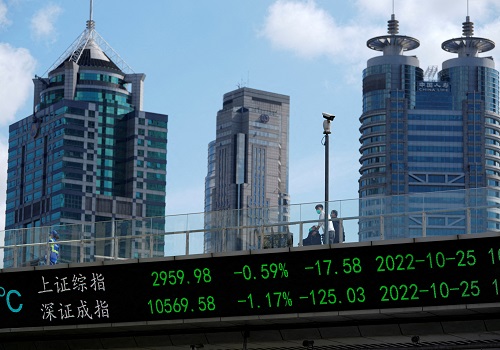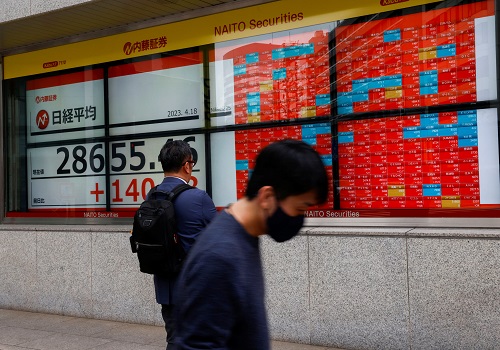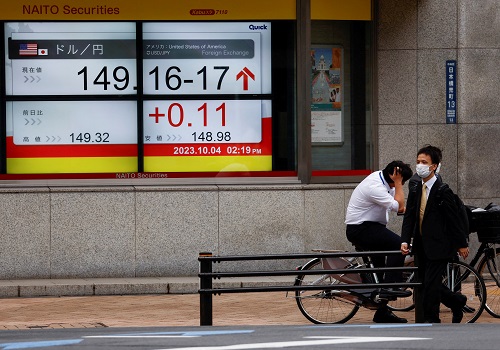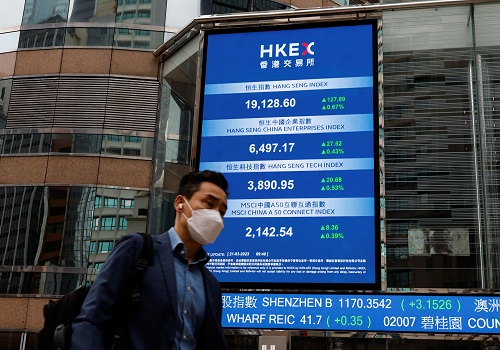Asia shares sink, dollar advances as rate-hike outlook strengthens
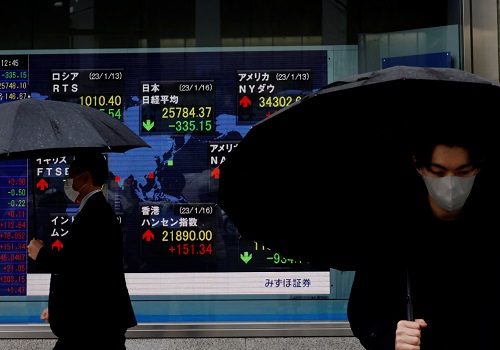
Follow us Now on Telegram ! Get daily 10 - 12 important updates on Business, Finance and Investment. Join our Telegram Channel
Asian equities were at the lowest in more than a month on Friday and the dollar hovered around six-week highs amid revived expectations the U.S. central bank would stick to its monetary tightening path.
Data from U.S. Labor Department overnight showed monthly producer prices had accelerated in January, while a separate report from the agency showed the number of Americans filing new claims for unemployment benefits had unexpectedly fallen last week.
U.S. stock indexes ended Thursday sharply lower as the economic data from the week emphasised the stickiness of inflation and strength of the economy.
MSCI's broadest index of Asia-Pacific shares outside Japan fell as much 1.19% to 530.39, its lowest since Jan. 9. The index is down 3% for the month and set for its third straight week of losses.
Japan's Nikkei closed 0.6% lower, while Australia's S&P/ASX 200 index ended down 0.81%. China shares slipped 0.16%, and Hong Kong's Hang Seng Index was 0.58% weaker.
The dour mood is set to continue in Europe, with the Eurostoxx 50 futures down 0.77%, German DAX futures 0.69% lower and FTSE futures down 0.24%.
"No matter how you cut it, (U.S.) inflation was hot," said Tapas Strickland, head of market economics at National Australia Bank. "The latest data supports the Fed view of needing to continue to raise rates and hold them there higher for longer."
The market is now pricing U.S. interest rates to peak at 5.28% in July and remain above 5% until the end of the year.
Two Fed officials said on Thursday the U.S. central bank probably should have lifted interest rates more than it did early this month, and they warned that additional rises in borrowing costs were essential to lower inflation back to desired levels.
"The incoming data have not changed my view that we will need to bring the fed funds rate above 5% and hold it there for some time," Cleveland Fed President Loretta Mester said.
At its Jan. 31-Feb. 1 policy meeting, the Fed opted to moderate the pace of interest rate rises, lifting its benchmark overnight rate by 25 basis points to the 4.50%-4.75% range after a series of jumbo rate increases last year.
But since then economic data has pointed to a tight labour market and sticky inflation keeping the pressure on the central bank to remain on its tightening path.
"After the CPI (consumer price index) report this week brought back concerns on the pace at which inflation is cooling, January PPI (producer price index) also saw a hotter than expected print," Saxo Markets strategists said.
They said both goods and services prices had increased in January, raising doubts over the goods disinflation narrative and continuing to support the thesis that services inflation was sticky.
The increasing expectations of the Fed lifting rates further has pushed U.S. Treasury yields higher, with the yield on 10-year Treasury notes up 5.1 basis points at 3.894%, the highest since Nov. 10.
The two-year U.S. Treasury yield, which typically moves in step with interest rate expectations, was up 5.6 basis points at 4.675%, the highest in more than three months.
The dollar index, which measures U.S. currency against six major rivals, rose 0.307% on Friday to 104.43, a fresh six week high.
The euro was down 0.33% at $1.0633, while sterling was last trading at $1.1941, down 0.43% on the day. Both currencies were at their lowest in over a month.
The Japanese yen weakened 0.60% to 134.72 per dollar, having touched its lowest in nearly two months.
Elsewhere, U.S. crude fell 0.9% to $77.78 per barrel and Brent was at $84.44, down 0.82% on the day.












 320-x-100_uti_gold.jpg" alt="Advertisement">
320-x-100_uti_gold.jpg" alt="Advertisement">





